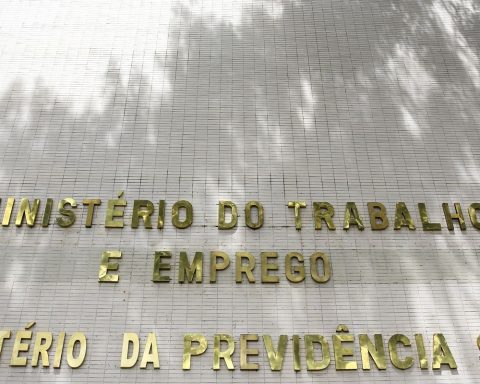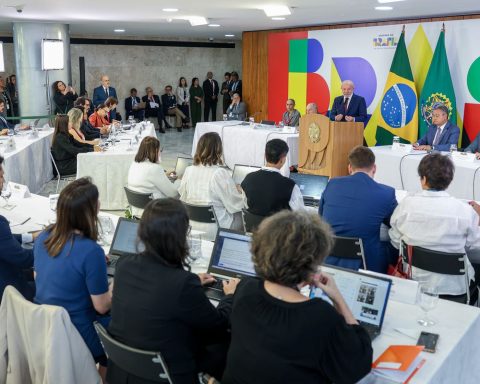In the month following the presidential elections, an expression has occupied a central place in the public debate. In order to find space to keep the minimum value of Bolsa Família at R$ 600 and recompose the budget of several programs in the 2023 Budget, the elected government wants a proposal for an amendment to the Constitution (PEC) that would allow extrapolation of the spending ceiling in up to R$ 198 billion over the next four years.
The proposal has caused turbulence in the financial market in recent days, because part of the investors fears the lack of control of public spending. This is despite the expense limitation having been breached several times in recent years. The government will be entitled to spend BRL 1.259 trillion this year and BRL 1.8 trillion in the next. After all, what is the spending cap?
Created by constitutional amendment at the end of 2016, the federal spending cap is one of three fiscal rules that the government must obey. The others are the primary result target (deficit or surplus), established in the Budget Guidelines Law for each year, and the golden rule, instituted by Article 167 of the Constitution and which obliges the government to request, in some cases, authorization from the Congress to issue government bonds.
Considered one of the main fiscal anchors in the country, the spending ceiling aims to prevent the lack of control of public accounts. The adoption of this mechanism gained strength after the crisis in Greece at the beginning of the last decade.
In the case of Brazil, the ceiling sets a limit to the growth of federal government spending over 20 years, from 2017 to 2036. Total spending by the Union in 2016 is now corrected by official inflation, the Extended Consumer Price Index (IPCA) , year by year, in the first ten years, from 2017 to 2026.
At the end of 2021, the calculation formula underwent a change. Until last year, the ceiling was corrected by the accumulated IPCA between July of two years before and June of the previous year. A new amendment to the Constitution altered the calculation period and now considers the effective IPCA for the first six months of the year and the official IPCA estimate for the final six months to correct the ceiling for the following year.
triggers
The constitutional amendment that introduced the spending cap establishes a series of triggers that can be triggered if federal spending grows more than inflation. In theory, these triggers would be activated in three stages.
The first would prohibit the expansion of staff and real readjustments (above inflation) for civil servants and would limit discretionary (non-mandatory) expenses and administrative costs to inflation. The second would prohibit nominal readjustments to civil servants and would limit discretionary expenses and administrative costs to the nominal value pledged (authorized) in the previous year.
The third stage would prohibit increases in the minimum wage above inflation and would cut spending on travel, transfers and per diems for public servants by 30%, maintaining the restrictions of the second stage.
These triggers would be fired if there was a forecast in the Federal Budget that the ceiling would be breached. The problem, however, is that the government discovered that it could only submit a budget bill with expenditures outside the ceiling if discretionary spending fell to zero, a scenario that would never be achieved because it would make public services unfeasible.
To correct the problem, the constitutional amendment that resulted in the new fiscal framework, in 2021, allowed the sending of budgets outside the spending ceiling when mandatory expenses subject to the spending ceiling exceed 95% of total expenses. The restriction applies to both the Executive and the Legislative, Judiciary and Public Ministry. Several economists, however, say that the 95% limit is also difficult to reach and, before the current discussion on the ceiling, suggested reducing it to 85%.
Comparation
Most countries that adopt spending caps do so through ordinary laws or multi-year plans, for a maximum of three or four years. In addition to Brazil, few countries have fixed the fiscal anchor in the Constitution, such as Denmark, Singapore and Georgia.
Also unlike other countries, the spending ceiling in Brazil includes investments (public works and equipment purchases) and does not have an escape valve in times of recession or economic crisis. In Peru, which has adopted a spending cap since 1999, spending was not simply corrected for inflation, with real growth (above inflation) of 2% in the first years and 4% from 2004 onwards.
The spending ceiling in the neighboring country could also be breached when economic growth was low and, in 2012, began to exclude investments, social programs and spending on public security.
holes
In the current system, the ceiling can be extrapolated in some cases: extraordinary credits (related to emergency spending), capitalization of state-owned companies not dependent on the Treasury (mechanism used to solve financial problems or prepare companies for privatization), Electoral Justice expenses with elections and mandatory transfers from the Union to states and municipalities.
In other cases, it is necessary to modify the Constitution. Despite the attention surrounding the current proposal, the spending ceiling has been exceeded in recent years. Since the creation of the mechanism, the limit has been breached at least seven times, of which five through constitutional amendments.
In 2019, the government had to approve a constitutional amendment to withdraw BRL 46 billion so that the Union could distribute, to states and municipalities, the resources of the new onerous transfer of oil in the pre-salt layer. As the transfer was voluntary, not mandatory, it was necessary to sew a constitutional amendment with Congress. The capitalization of the state-owned Emgepron, linked to the Navy, for the construction of corvettes (type of ship) cost over R$ 7.6 billion.
In 2020, the War Budget to face the covid-19 pandemic was responsible for excluding another BRL 507.9 billion, according to calculations by economist Bráulio Borges, a researcher at the Brazilian Institute of Economics of the Getulio Vargas Foundation (FGV-Ibre).
In 2021, the constitutional amendment of the new fiscal framework allowed an additional BRL 44 billion to finance the payment of the second round of emergency aid, which had been resurrected after the wave of the gamma and delta variants of the new coronavirus. New spending on extraordinary loans to face the pandemic raised the amount excluded from the ceiling last year to R$ 117.2 billion.
Also at the end of last year, the amendment that changed the ceiling correction formula released another R$ 64.9 billion and the amendment that allowed the installment payment of precatories (debts recognized by the Justice) of great value released another R$ 43.56 billion. The impact for the 2022 Budget is estimated at BRL 108.2 billion.
Finally, in July of this year, the constitutional amendment that increased the minimum value of the Auxílio Brasil to R$ 600 and created the Truck Driver and Taxi Driver aid was responsible for removing another R$ 41.25 billion from the ceiling.
















